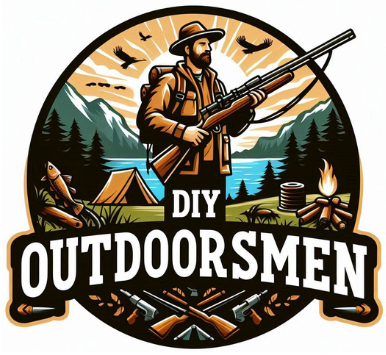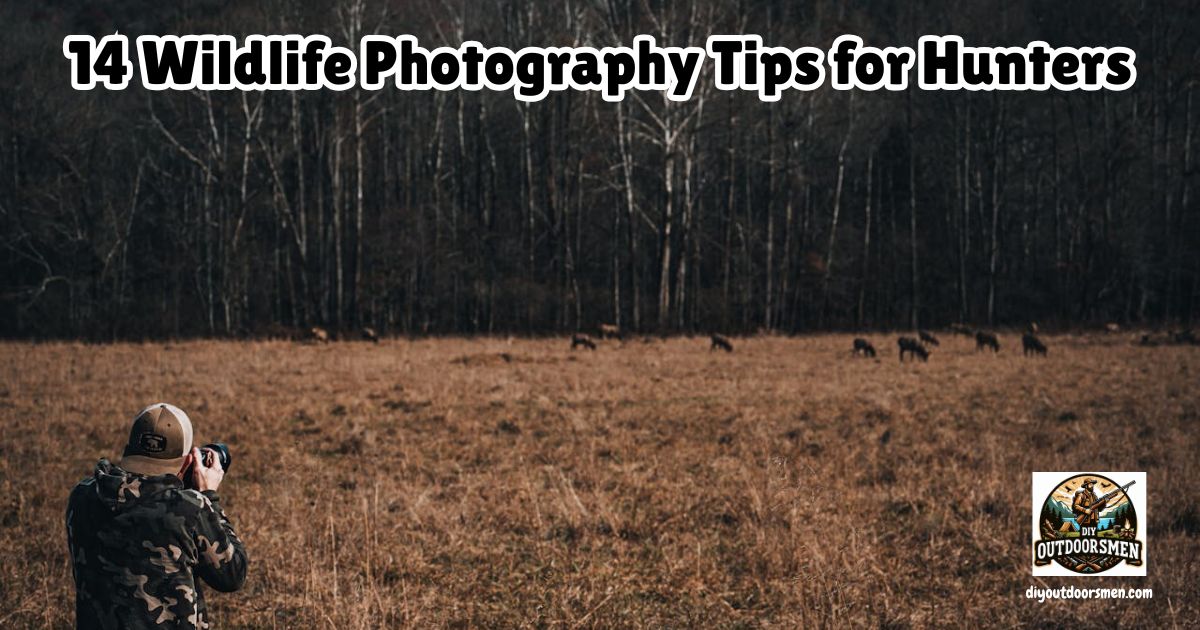Contents
- 1 My Essential Gear for Wildlife Photography
- 2 Field Preparation and Patience Make a Huge Difference
- 3 Camera Settings and Shooting Techniques Tailored for Hunts
- 4 Keeping Wildlife and Ethics Front of Mind
- 5 Composition Techniques that Make Wildlife Photography Stand Out
- 6 Staying Safe and Comfortable in the Field
- 7 Common Questions about Wildlife Photography During Hunts
- 8 Wrapping Up on Wildlife Photography During Hunts
Wildlife photography during hunts opens up unique experiences, capturing nature at its most raw and unfiltered. Being in the field lets me watch animals acting freely, allowing me to preserve memories and behaviors rarely observed up close.
QUICK LOOK: Tips for Wildlife Photography While Hunting
- Telephoto Lens: I pick a lens between 300mm and 600mm, so I can shoot wildlife from afar and avoid making animals uncomfortable.
- Sturdy Tripod or Monopod: Since I’m often limited in my movement from a blind or natural cover, a lightweight but stable support keeps my shots crisp and steady.
- Camera Body with Fast Autofocus: Animal activity happens fast, so I use a camera with reliable, quick autofocus to catch those fleeting moments.
- Extra Batteries and Memory Cards: Cold conditions and lots of shooting drain batteries and fill up cards quickly, so I always bring spares.
- Protective Covers: To guard against dust, rain, and mud, I use rain covers and keep lens cloths handy to keep equipment in top shape.
- Shutter Speed: I stick to 1/1000s or even faster, freezing action whether a deer bolts or a bird takes flight.
- Aperture Priority: Wide apertures like f/4 or f/5.6 let in plenty of light, especially at dawn or dusk, and add a buttery background that brings the animal into focus.
- ISO Settings: I’m willing to up the ISO—modern cameras handle higher numbers, like 1600 or 3200, pretty well, which helps me adapt to tough lighting.
- Continuous Autofocus: I go with AF-C mode to track moving animals, so my subject stays sharp across several frames.
- Silent Shooting: If possible, I use the camera’s electronic shutter and mute any beeps to avoid attracting attention from alert animals.
- Lighting: The golden hours—dawn and dusk—are the best times for soft, colorful light. I position myself so that the sunlight lands gently on the animal or catches an interesting detail.
- Framing: Using the rule of thirds keeps photos dynamic. I make use of natural lines, like tree branches or water edges, to draw attention to the subject.
- Focus on the Eyes: If the animal’s eyes are crisp and sharp, the entire image feels more alive. I rely on single-point focus for these close-ups.
- Different Angles: Changing my viewpoint adds drama. Shooting from ground level can turn even a small critter into a scene-stealer, while an overhead shot reveals their environment.
Mixing photography with hunting requires thoughtfulness, respect for wildlife, and the right choice of equipment to make sure my presence doesn’t alter natural behavior. Here, I’ll guide you through practical tips that have boosted my efforts to get eye-catching wildlife shots while keeping ethical hunting in mind.
My Essential Gear for Wildlife Photography
Bringing the right equipment makes a difference when I’m out in the wild and need to stay still while being ready for both hunting and picture-taking. Balancing quiet operation and portability helps everything go smoothly. Here’s what I always make space for in my bag:
- Telephoto Lens: I pick a lens between 300mm and 600mm, so I can shoot wildlife from afar and avoid making animals uncomfortable.
- Sturdy Tripod or Monopod: Since I’m often limited in my movement from a blind or natural cover, a lightweight but stable support keeps my shots crisp and steady.
- Camera Body with Fast Autofocus: Animal activity happens fast, so I use a camera with reliable, quick autofocus to catch those fleeting moments.
- Extra Batteries and Memory Cards: Cold conditions and lots of shooting drain batteries and fill up cards quickly, so I always bring spares.
- Protective Covers: To guard against dust, rain, and mud, I use rain covers and keep lens cloths handy to keep equipment in top shape.
Choosing gear based on portability and silent operation is super important. For instance, mirrorless cameras are lighter and can shoot without a sound, helping me stay unnoticed while carrying hunting gear as well.
Field Preparation and Patience Make a Huge Difference
Wildlife photography while hunting rarely happens by pure chance. I dig into animal habits, reading about their daily routines, favorite food sources, and even how different weather can switch up their movement. I check recent tracks, maps, and sightings to find the best spots.
Once I find my place, patience becomes the key. Sometimes I wait for hours, moving just enough to check through the lens or shift quietly for a better view. Packing extra layers of clothing, snacks, and something to keep me occupied helps me stay still and unnoticed by wildlife.
Learning what makes animals tick gives me an edge. If I’m after deer, I’ve learned the importance of knowing their favorite feeding times at dawn and dusk. For waterfowl, wind direction and preferred landing zones are crucial. These preparations pay off when the ideal shot pops up, letting me snap it without distraction or wasted movements adjusting gear.
Camera Settings and Shooting Techniques Tailored for Hunts
The hunting environment is ever-changing, and animals might only appear in the open for a moment. My approach is to set up my camera so I’m always ready. Here’s my go-to checklist:
- Shutter Speed: I stick to 1/1000s or even faster, freezing action whether a deer bolts or a bird takes flight.
- Aperture Priority: Wide apertures like f/4 or f/5.6 let in plenty of light, especially at dawn or dusk, and add a buttery background that brings the animal into focus.
- ISO Settings: I’m willing to up the ISO—modern cameras handle higher numbers, like 1600 or 3200, pretty well, which helps me adapt to tough lighting.
- Continuous Autofocus: I go with AF-C mode to track moving animals, so my subject stays sharp across several frames.
- Silent Shooting: If possible, I use the camera’s electronic shutter and mute any beeps to avoid attracting attention from alert animals.
I also shoot in bursts, taking multiple frames within seconds to make sure I save that split-second look or motion. Practicing with pets or neighborhood birds makes adjusting fast and smooth in the field second nature to me.
Keeping Wildlife and Ethics Front of Mind
Combining hunting and wildlife photography gives me a front-row seat to nature, but I stay on my toes to make sure my presence doesn’t disrupt wildlife or damage the environment. Here are the ethics I live by:
- Maintain Distance: I always let my telephoto lens do the work so animals can act naturally, and I never crowd them for a better shot.
- Quiet Movements: Moving slowly, wearing soft clothes, and careful handling of camera and gear all help keep me hidden and unobtrusive.
- Leave No Trace: Every scrap of trash, every gear bag, and every temporary hide leaves with me. I stay on established paths and take care not to trample fragile plants.
- Be Transparent About Purposes: When hunting public land or in a group, I’m open about whether I’m out to hunt or take pictures. This clears up confusion and prevents conflicts with other hunters.
Sometimes, the best outcome is witnessing an animal living naturally, even if my camera stays silent. Focusing on animal welfare above everything else earns respect for nature and great rewards from my time outdoors.
Composition Techniques that Make Wildlife Photography Stand Out
Getting wildlife in your viewfinder is only part of the challenge. There’s a lot more that goes into making a photo come alive. Here’s what I keep in mind for pictures with impact:
- Lighting: The golden hours—dawn and dusk—are the best times for soft, colorful light. I position myself so that the sunlight lands gently on the animal or catches an interesting detail.
- Framing: Using the rule of thirds keeps photos dynamic. I make use of natural lines, like tree branches or water edges, to draw attention to the subject.
- Focus on the Eyes: If the animal’s eyes are crisp and sharp, the entire image feels more alive. I rely on single-point focus for these close-ups.
- Different Angles: Changing my viewpoint adds drama. Shooting from ground level can turn even a small critter into a scene-stealer, while an overhead shot reveals their environment.
Afterward, I sort through my shots for different cropping possibilities and play with depth of field to highlight details or simplify a cluttered background. This is where some editing magic brings hidden gems to the surface.
Staying Safe and Comfortable in the Field
It’s easy to lose focus on personal safety when I get caught up in wildlife photography. Here’s my checklist to keep myself and my equipment safe and comfy:
- Dress for the Elements: Layers that wick moisture and insulate, plus solid boots, are vital so changing weather or rugged terrain doesn’t cut my day short.
- Monitor Weather Conditions: Quick weather changes can put both photography and hunting on hold. I bring lightweight weather protection like a poncho or rain cover for my gear, and don’t hesitate to leave if storms roll in.
- Share My Plans: Before heading out, I let a friend or relative know my precise location and expected return, which is crucial whenever I find myself in remote territory.
Drinking plenty of water, snacking regularly, and giving myself time to rest keep me sharp so I can spot both wildlife activity and possible hazards without missing a beat.
Common Questions about Wildlife Photography During Hunts
Friends in both the hunting and wildlife photography worlds often ask how to combine these two interests smoothly. Here are a few regulars:
Can I photograph and hunt at the same time?
It’s possible, but I’m strict about focusing on one at a time. Switching between a weapon and a camera needs clear boundaries for safety. When I’m shooting photos, I put my hunting equipment aside and vice versa.
Is my scent or noise an issue while photographing?
Definitely. Animals are keen on both. I treat scent and sound control for photography just as I do for hunting. Wind direction matters, and I keep my movements as slow and quiet as possible.
What’s a good way to practice before going on a hunt?
Working with fast-moving animals like birds or even pets in a park sharpens my skills behind the camera. Practice tracking focus and changing settings quickly helps when I’m out in the wild.
Wrapping Up on Wildlife Photography During Hunts
Adding wildlife photography to hunting adventures has changed the way I experience the outdoors. I pay attention to the smallest details and slow down to enjoy quiet moments, with or without a trophy photo.
The trick to mixing these passions lies in good planning, respect for wildlife, and a watchful eye on every possibility. With patience and practice, the thrill of capturing real, wild moments is a reward like no other—one that keeps me coming back for more every season.
Most Recent Articles:
- Complete Guide On Tracking Game Animals
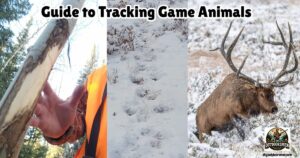
- DIY 4-Step Guide To Field Dressing And Quartering A Deer
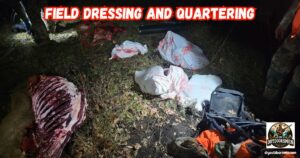
- Night Vision Binoculars For Nocturnal Hunting
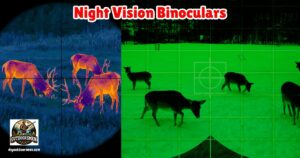
- The Science Behind Camouflage Patterns For Deer Hunting

- Binocular Accessories For Hunters

- 9 Tips for Using Trail Cameras To Track Deer Movements

As always, stay safe, enjoy the journey, and please try to leave it cleaner than you found it. If you have any comments, questions, ideas, or suggestions, please leave them in the comment section below, and I’ll get back to you ASAP. You can follow us on YouTube: Man Art Creations for videos of our DIY Adventures.
P.S. Thanks so much for checking out our blog; we really appreciate it. Just so you know, we may receive a commission if you click on some of the links that appear on our site. This helps us keep our content free and up-to-date for everyone. We appreciate your support!
